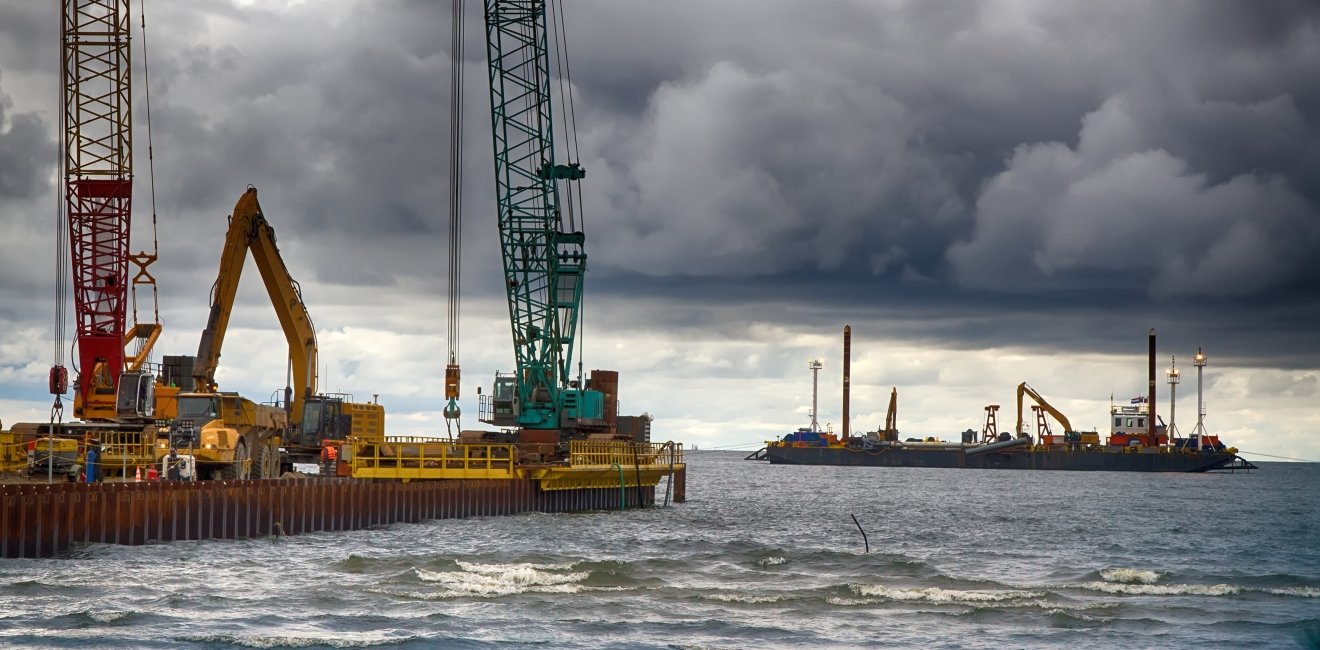
A blog of the Kennan Institute
BY ANDRIAN PROKIP
Even as Ukraine celebrates its thirtieth anniversary of independence, energy sufficiency remains a challenge to the country’s sovereignty. Three decades of independent development have not succeeded in fully loosening Ukraine’s ties to Russian energy. And 2021 is a key year, for several reasons: the expected completion of Nord Stream 2 clouds the future of Ukraine’s gas pipelines; Ukraine is engaged in final preparations to disconnect from the Russian power system and integrate with the European ENTSO-E cooperative framework for electricity producers; the country still has a high and ongoing dependence on Russia and Belarus for oil products supplies, which it must reduce. The government should face these energy risks squarely and find some way to mitigate them to avoid becoming even more dependent on Russia.
When the Soviet Union collapsed and Ukraine became an independent state, the opportunity to create a new economic reality for its citizens was missed by the government and policymakers. The delayed reorientation toward a market-based energy policy resulted in decades of corruption and dependence on Russia.
After the 2014 Revolution of Dignity, Ukraine did succeed in making some progress toward energy security and market reforms. Since then, new challenges have appeared for the government that require action and a move beyond the populism that to date has characterized Ukraine’s energy policy. With Russia’s aggressive containment moves toward Ukraine in 2021, it would be expected to pressure Ukraine and try to keep the country within its sphere of influence. The question now is, how will Ukraine’s government cope with this challenge?
Gas Infrastructure
After the United States waived sanctions on Russian companies connected to Nord Stream 2, serious concerns arose over Ukraine’s future as a transit country. For years, Kyiv has embraced the narrative that the Kremlin could provoke significant instability, even full-scale war, in a scenario in which Russia and the EU were no longer critically dependent on Ukrainian transit.
Less often mentioned are the risks regarding reliable and affordable gas delivery to Ukrainian consumers in a low- or even zero-transit scenario. The fixed costs associated with maintaining the gas transmission system must be covered, even in a scenario of falling transit revenues. The situation is worsened by the underutilization of Ukraine’s pipelines, often falling below the capacity of the gas grid. This situation reduces the overall effectiveness of the system because consumers and producers still incur the maintenance costs associated with the unused capacity.
An additional technical issue yet to be addressed is how internal gas distribution in a zero-transit scenario might work. In such a case, gas received from the EU would become more expensive, and Russia would undoubtedly seize the opportunity to try to entice Ukraine back to using Russian gas.
The solution to the gas infrastructure issues should begin with rethinking and redesigning Ukraine’s entire gas transmission and distribution systems from the ground up. Such a redesign should take into consideration the volume of gas consumption within the country and the potential for moving into low-carbon gases—biomethane and hydrogen—while also putting in place predictable and market-oriented policies with respect to gas supply systems.
Electricity
In the electricity sector, there are some promising developments. Ukraine plans to disconnect from the Russian power grid in 2023 and join the EU’s ENTSO-E system, or European Network of Transmission System Operators—Electricity, which already extends beyond the EU’s borders. For Ukraine, this means better conditions to compete, real economic integration with the EU, and fewer opportunities for Russia to meddle in Ukraine’s affairs. But prior to synchronization with the EU’s system, Ukraine must demonstrate its ability to operate on its own for a period of time without any electricity imports.
The current situation in the electricity market threatens the country’s ability to meet this requirement. For the second year running, key energy companies have sustained losses, while the market is mired in debt. Accordingly, energy facilities may not be ready to operate reliably during the coming winter, and energy companies may lack the necessary volumes of fuel to produce electricity.
In lieu of presenting solutions to these electricity market problems, the Ukrainian government continues to push populistic proposals like that reducing electricity prices for households, which threaten to saddle the market with even more debt and instigate further losses for market participants.
Petroleum
Ukraine’s troubles also stem from the petroleum sector specificity, where Ukraine is deeply dependent on Belarus and Russia. As of 2020, both neighboring countries were responsible for 65 percent of diesel, 40 percent of petroleum, and 49 percent of liquefied petroleum gas consumed in Ukraine.
Most critical is the high reliance on imports of diesel, which is in high demand in Ukraine. The Ukrainian army is one of the biggest consumers of diesel. Supply shortages could be manipulated by Russia to threaten Ukraine’s economy and defense capabilities.
Ukraine was not always so dependent in the petroleum sphere. Twenty years ago, Ukraine was almost self-sufficient in oil products. Today only one of Ukraine’s six big oil refineries is in operation. Some of the idled facilities may yet be modernized by the state, which would contribute to fuel self-sufficiency and Ukraine’s security in general. But again, progress in this arena depends on political will and the long-term policies of the Zelensky administration.
Pricing Policy
Another big problem in the energy sector is that the Ukrainian government is trying to square the circle by using a controlled economy approach to make the sector work efficiently. Rather than implement market-based energy policy reforms, the government has adopted a populist approach, seeking short-term solutions to reduce the costs of energy services and utilities borne by households.
The best way to sustainably decrease household bills, however, is through strategic energy efficiency, which requires both huge investments in the sector and a predictable government policy. Ukraine should create a real economy in which all services are paid for, which means households should pay the true costs of the energy they use, with subsidies available for vulnerable consumers.
Conclusion
As Ukraine enters its fourth decade of political independence, the energy sector does not fully support independence. Indeed, certain features of the energy sector seem contrarily to support an ongoing relationship of dependency with Ukraine’s neighbors, including Russia.
The government appears not to realize how grave the energy sector contradictions are or how they endanger the country’s future. The government should pay urgent attention to geopolitical issues surrounding Ukraine’s role as a gas transmitter and to modernizing the country’s internal distribution systems, should set aside the populist pricing and policy strategies in the electricity market, and should strengthen Ukraine’s self-sufficiency in petroleum production. Ukraine has a chance to develop a stronger, more robust economy in the next decade, but only if the energy sector can be transformed. Ukraine cannot afford to throw away this chance. The country’s very sovereignty is at risk.
The opinions expressed in this article are those solely of the authors and do not reflect the views of the Kennan Institute.
Author

Director, Energy Program, Ukrainian Institute for the Future

Kennan Institute
After more than 50 years as a vital part of the Wilson Center legacy, the Kennan Institute has become an independent think tank. You can find the current website for the Kennan Institute at kennaninstitute.org. Please look for future announcements about partnership activities between the Wilson Center and the Kennan Institute at Wilson Center Press Room. The Kennan Institute is the premier US center for advanced research on Eurasia and the oldest and largest regional program at the Woodrow Wilson International Center for Scholars. The Kennan Institute is committed to improving American understanding of Russia, Ukraine, Central Asia, the South Caucasus, and the surrounding region through research and exchange. Read more

Explore More in Focus Ukraine
Browse Focus Ukraine
Talking to the Dead to Heal the Living

Ukrainian Issue in Polish Elections


